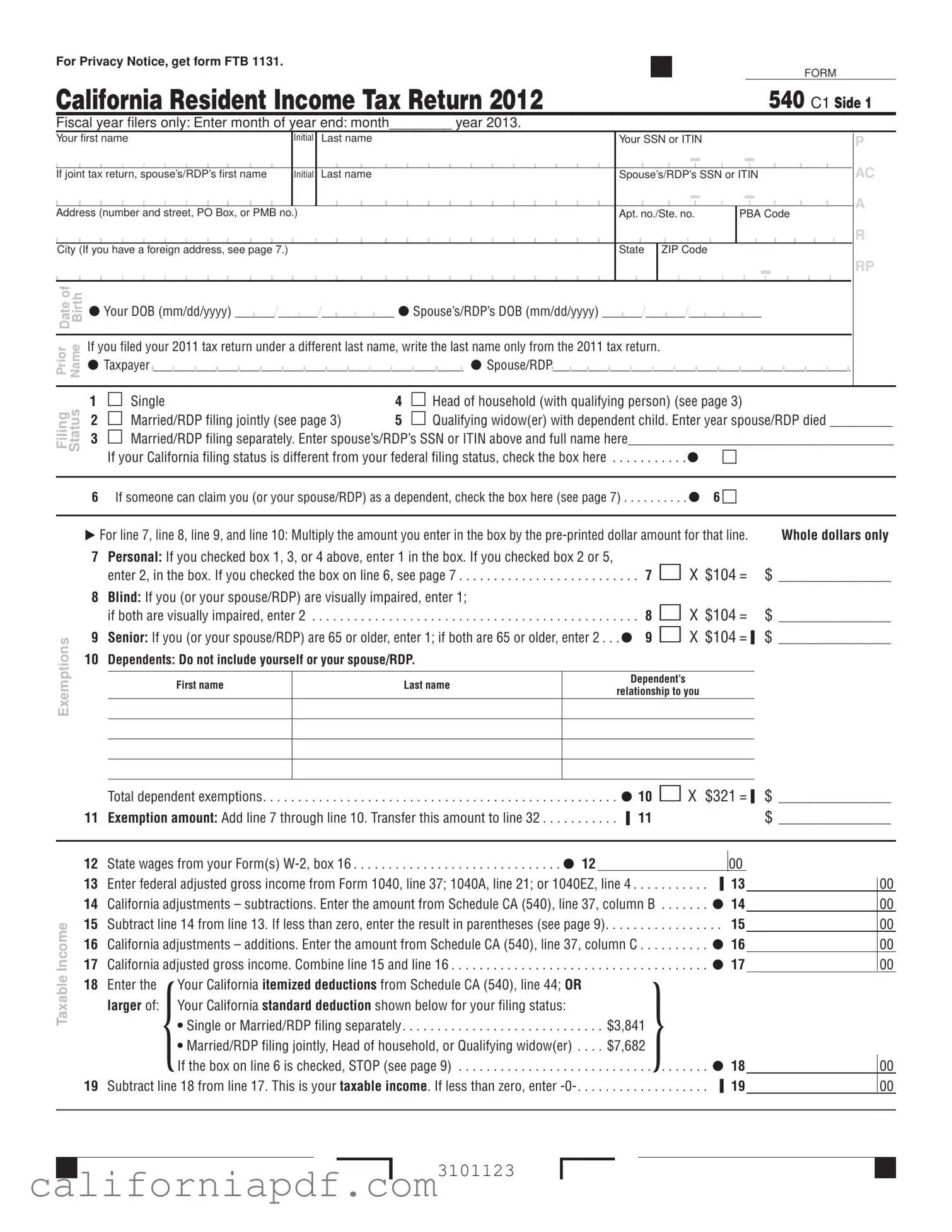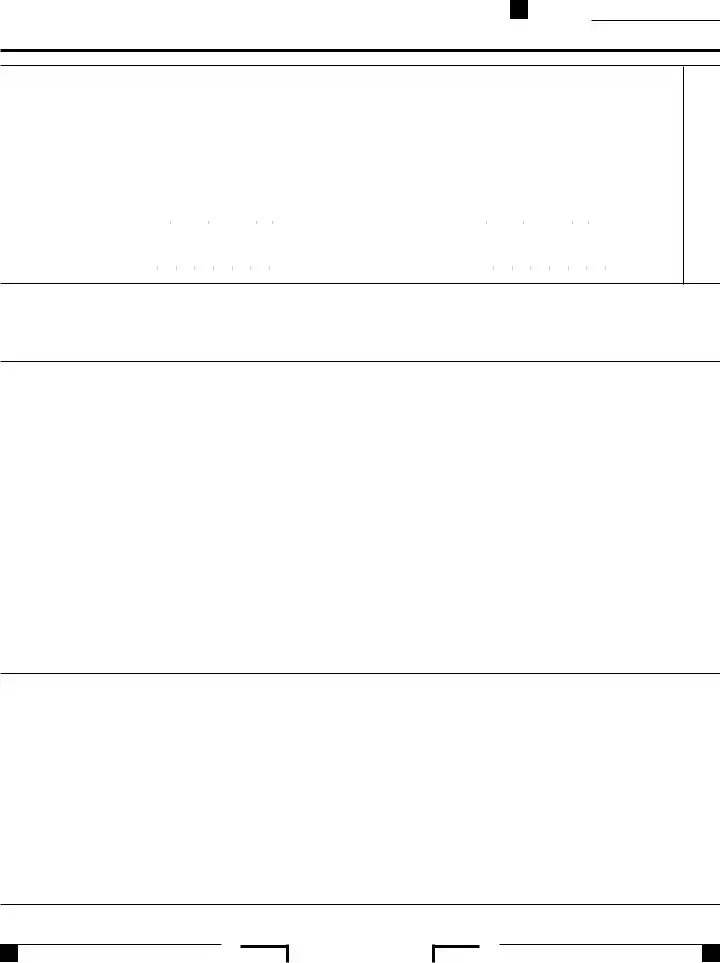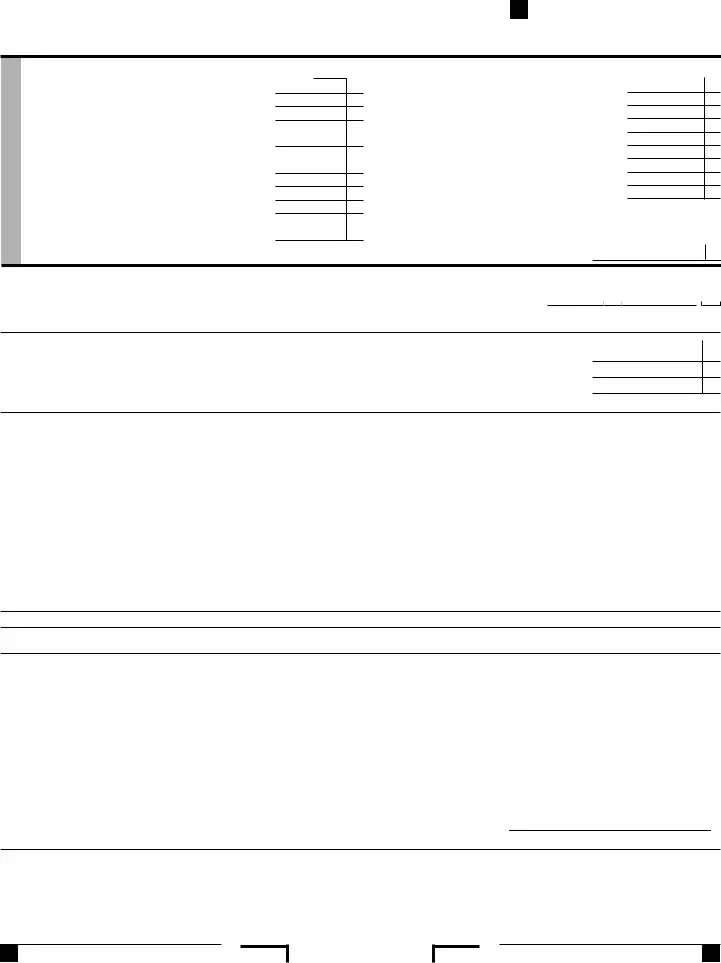The U.S. Federal 1040 Form, serving as the standard federal individual income tax return, shares notable similarities with California's 540 C1 Form. Both require detailed personal information, including Social Security Numbers (SSNs) for the taxpayer and spouse, if applicable, along with income and deduction information to calculate taxes owed or refunds due. Additionally, adjustments are taken into account to determine the adjusted gross income, which directly influences the taxable income calculation on both forms.
The 540 Schedule CA is a state-specific document complementary to the 540 C1 Form, designed to adjust the federal adjusted gross income and itemized deductions to meet California's tax codes. This adjustment process mirrors the relationship between the Federal 1040 Form and its schedules, where income and deductions may be modified based on state-specific tax laws, ensuring taxpayers' income is accurately reported after state-specific additions or subtractions.
Form W-2, the Wage and Tax Statement, provides the foundation for data entered on both the 540 C1 and Federal 1040 Forms. It outlines the tax withheld and wages earned by an employee. This critical information from the W-2 is directly used to fill in line items concerning state wages and income tax withheld, bridging employee earnings documentation with individual tax return filings.
The 540 Schedule CA (540), which serves as a detailed record of adjustments to federal income and deductions for Californian taxpayers, finds a counterpart in Schedule A of the Federal 1040 Form, where taxpayers itemize deductions. Both schedules are essential for taxpayers who opt to itemize, allowing them to deduct specific expenses like medical, charitable contributions, and mortgage interest, adjusting gross income subject to taxation.
Form FTB 3506, Child and Dependent Care Expenses Credit for California residents, is directly related to the federal Form 2441. Both are designed to provide tax credits to taxpayers who incur expenses for the care of a qualifying individual, to allow them to work or actively look for work. These forms calculate the allowable credit to be applied against the income tax owed, providing a mechanism for reducing tax liability based on childcare costs.
The Form 1099 series, which reports various types of income outside of wages, such as dividends, interest, and independent contractor income, is crucial for completing both the 540 C1 and Federal 1040 Forms. This information impacts the income reporting on both state and federal levels, underscoring the interconnected nature of tax documentation where multiple forms of income are subject to taxation.
Lastly, the FTB 3800 Form, used by Californians to calculate the minimum franchise tax for corporations, shares a foundational relationship with the corporate aspects of federal tax return preparations, specifically Form 1120 for corporations. While serving different entities – one for individual taxpayers and the other for corporations – both forms reflect the principle that tax calculations must be adjusted for specific financial situations, be it for an individual or a corporate entity, ensuring the right amount of tax is computed and subsequently paid.






 .
.